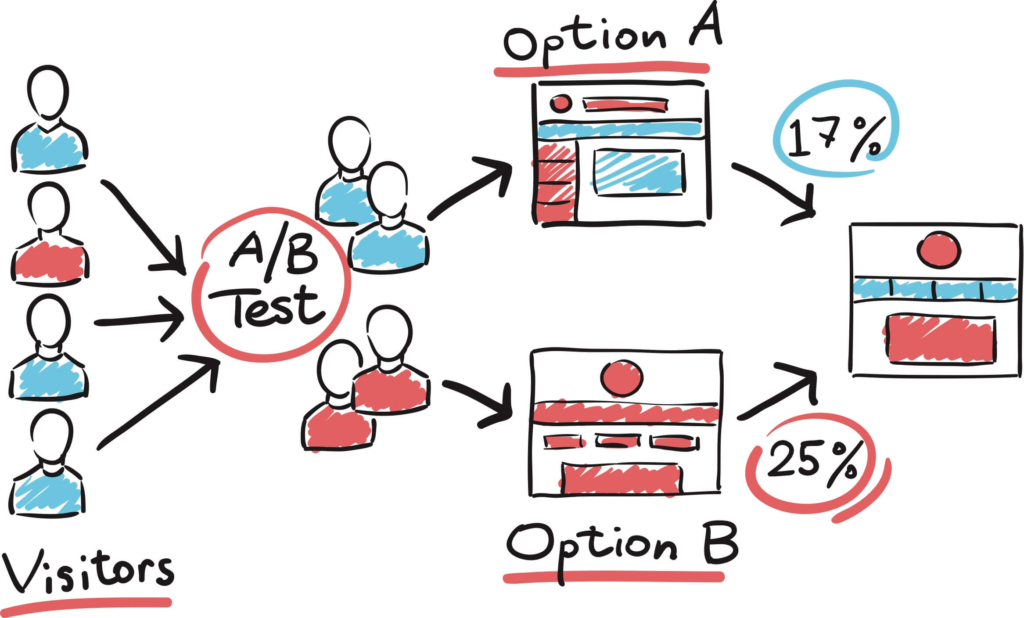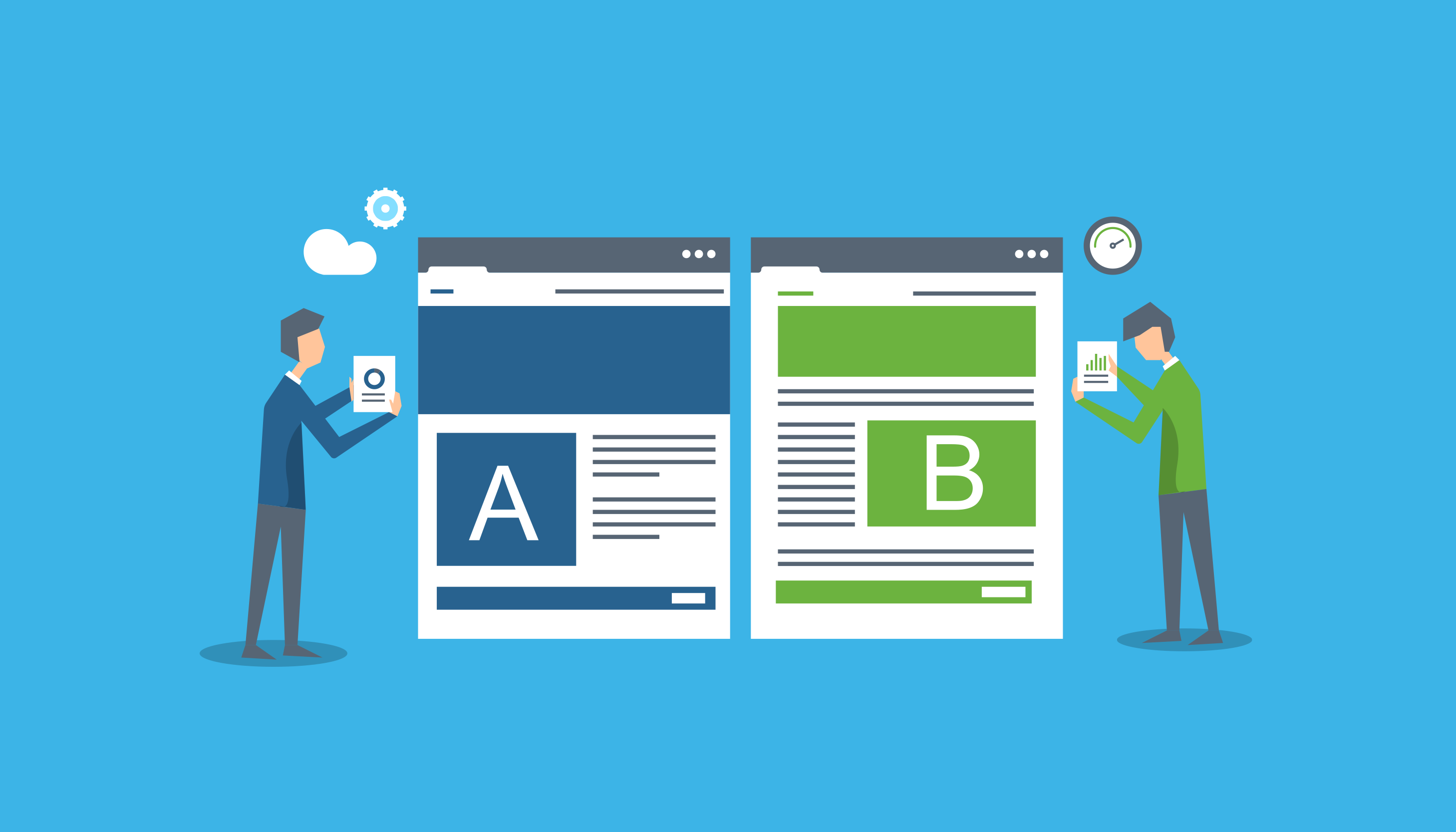In affiliate marketing, success often hinges on the fine details. Small changes in the way you present offers, structure your landing pages, or communicate with your audience can lead to significant improvements in performance. One of the most effective ways to fine-tune your marketing efforts is through A/B testing. This systematic approach allows you to test different variations of your campaigns to discover what resonates best with your audience.
This article will explore the importance of A/B testing in affiliate marketing, how to conduct it effectively, and how it can help optimise your campaigns for higher conversions and revenue.
What is A/B Testing?
A/B testing, also known as split testing, is a method of comparing two versions of a web page, ad, or email to determine which one performs better. In an A/B test, you show version A to half of your audience and version B to the other half. By measuring the performance of each version, you can identify the changes that lead to better outcomes, such as more clicks, sign-ups, or sales.
In affiliate marketing, A/B testing is particularly valuable because it allows you to optimise various elements of your campaigns, from landing pages and email subject lines to ad copy and call-to-action buttons. The goal is to identify which variation yields the highest conversion rates, ultimately maximising your affiliate commissions.
Why A/B Testing is Essential for Affiliate Marketing Success

A/B testing is crucial for affiliate marketers because it provides data-driven insights that can help improve the performance of your campaigns. Here’s why it’s so important:
1. Optimises Conversion Rates
One of the most significant benefits of A/B testing is its ability to optimise your conversion rates. Small tweaks, such as changing the colour of a CTA button or rewording a headline, can have a considerable impact on the percentage of visitors who take action. By testing these changes systematically, you can continually improve your conversion rates, leading to higher earnings.
2. Improves ROI on Paid Ads
If you’re running paid ads to promote affiliate offers, A/B testing can help ensure that you’re getting the most out of your ad spend. Testing different ad creatives, headlines, and calls to action can help you identify which versions resonate most with your audience, reducing your cost per acquisition (CPA) and improving your return on investment (ROI).
3. Reduces Bounce Rates
If visitors are leaving your landing page without converting, A/B testing can help identify why. You can test different layouts, messaging, or visual elements to keep visitors engaged and encourage them to complete the desired action, whether it’s signing up for a newsletter or clicking an affiliate link.
4. Makes Data-Driven Decisions
Rather than relying on guesswork or assumptions, A/B testing gives you concrete data on what works and what doesn’t. This data allows you to make informed decisions about how to optimise your campaigns, reducing risk and increasing the likelihood of success.
5. Adapts to Changing Audiences
Over time, your audience’s preferences and behaviour may change. A/B testing allows you to continuously adapt your campaigns to meet the evolving needs and preferences of your target audience, ensuring long-term success.
What Elements Should You A/B Test?

In affiliate marketing, there are several key elements you can A/B test to optimise your campaigns for better performance. Here are some of the most important components to consider:
1. Headlines
Your headline is often the first thing visitors see, whether it’s on a landing page, ad, or email. A/B testing different headlines can help you determine which grabs the most attention and encourages visitors to read on or click through.
- Example Test: “10 Ways to Lose Weight with [Product]” vs. “Discover the Secret to Effortless Weight Loss with [Product]”
2. Call-to-Action (CTA) Buttons
The CTA button is where conversions happen. A/B testing different CTA texts, colours, and placements can have a significant impact on click-through rates.
- Example Test: “Buy Now” vs. “Claim Your Discount” or a green button vs. a red button.
3. Landing Page Layout
The design and layout of your landing page can influence how visitors interact with the content. You can test different layouts to see which version leads to higher engagement and conversions.
- Example Test: A two-column layout with text and an image vs. a single-column layout with text followed by the image.
4. Product Descriptions
The way you describe the product or service you’re promoting can have a major impact on conversions. A/B testing different copy variations, such as benefit-driven vs. feature-driven descriptions, can help identify what resonates with your audience.
- Example Test: A detailed description of all product features vs. a short, benefit-focused description.
5. Images and Visuals
Images can significantly influence the user’s experience on your page. Testing different product images, background colours, or video content can help determine which visuals drive the best results.
- Example Test: A product image showing the item in use vs. a static product image.
6. Email Subject Lines
Email marketing is a powerful tool for affiliate marketers, but your subject line is the key to getting your email opened. A/B testing different subject lines can increase open rates and improve overall campaign performance.
- Example Test: “Don’t Miss Our Limited Time Offer” vs. “Exclusive Discount Just for You!”
How to Conduct an Effective A/B Test
To get the most out of your A/B testing efforts, it’s essential to follow a structured process. Here’s a step-by-step guide to conducting an effective A/B test:
1. Set Clear Goals
Before you start testing, define your goal. Are you trying to increase click-through rates on a landing page, boost email open rates, or reduce bounce rates? Having a clear goal will guide your testing efforts and help you measure success.
2. Formulate a Hypothesis
A hypothesis is your educated guess about what you think will happen during the test. For example, you might hypothesise that changing the colour of your CTA button will lead to more clicks. By forming a hypothesis, you create a clear expectation of what you hope to achieve.
3. Choose a Variable to Test
It’s important to test one variable at a time to accurately measure its impact. For example, if you’re testing the effectiveness of different headlines, avoid making other changes to the page at the same time. This way, you’ll know that any change in performance is due to the headline and not another factor.
4. Split Your Audience Evenly
For an A/B test to be accurate, you need to split your audience evenly between the two versions. Many tools automatically do this for you, ensuring that version A is shown to one half of your audience and version B to the other half.
5. Run the Test for a Sufficient Time Period
One common mistake is ending a test too early. Running the test for too short a period can result in misleading data. It’s essential to run the test long enough to gather statistically significant results, especially if your traffic is low. Generally, you should run the test for at least a week or until you reach a sufficient sample size.
6. Analyse the Results
Once the test is complete, analyse the data to determine which version performed better. Look at key metrics such as click-through rates, conversion rates, and time on page to understand the impact of the changes.
7. Implement the Winning Variation
After analysing the results, implement the winning variation on your page or campaign. If the new version consistently outperforms the original, make it permanent and continue testing other elements to further optimise your campaign.
Tools for A/B Testing
Several tools can help you run and manage A/B tests, offering insights into what changes can improve your affiliate marketing efforts. Here are some of the best tools for A/B testing:
1. Google Optimize
Google Optimize is a free tool that integrates with Google Analytics, allowing you to run A/B tests on your website. It’s user-friendly and ideal for those new to testing.
2. Optimizely
Optimizely is a robust A/B testing platform that allows you to test and personalise website elements. It’s great for more advanced users who need detailed analytics and customisation options.
3. VWO (Visual Website Optimizer)
VWO offers A/B testing, heatmaps, and visitor recordings, making it a powerful all-in-one tool for conversion rate optimisation.
4. Mailchimp
If you’re running email marketing campaigns, Mailchimp’s A/B testing feature allows you to test subject lines, email content, and send times to maximise open rates and conversions.
The Power of A/B Testing in Affiliate Marketing

A/B testing is a vital tool for any affiliate marketer looking to maximise conversions and improve campaign performance. By continually testing and optimising different elements of your marketing efforts, you can make data-driven decisions that lead to better results, higher ROI, and increased affiliate earnings.
The key to success is being consistent with your testing and keeping a mindset of continuous improvement. By focusing on optimising one element at a time, you can systematically improve the effectiveness of your affiliate marketing campaigns and stay ahead in a competitive market.
If you’re exploring ways to enhance your marketing strategies, you might be intrigued by the concept of A/B Testing, which can be a game-changer in optimising campaign performance. Speaking of making informed marketing decisions, delving into Conversion Rate Optimisation could provide you with valuable insights into boosting your conversion rates. Additionally, understanding the intricacies of Affiliate Marketing as a whole can offer a broader perspective on how this unique marketing model functions and thrives. These resources could prove incredibly beneficial in elevating your marketing game.

